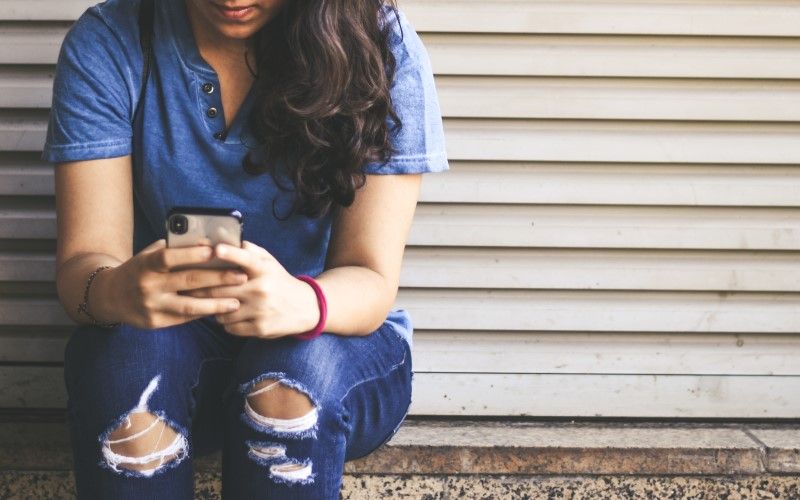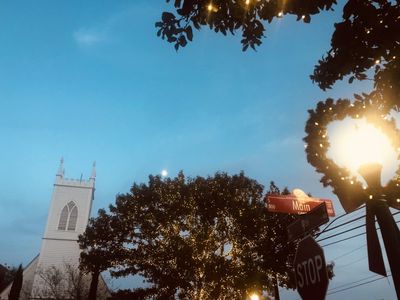My smartphone has become a barrier to my creativity.
I don’t blame the phone or the world of social media it connects me to. I blame myself. Our smartphones are tools after all. They began as digital Swiss Army knives. Phones that could play music and access email and take photos seemed so useful when they first came on the market.
Today of course, they’re more than that. Our smartphones have become our personal assistants and the narrators of our lives, broadcasting our movements and thoughts to the world. They’ve become our nearly constant companions. (This video from 2013 uncomfortably highlights our collective digital overuse. Unfortunately it’s still relevant.)
Putting technology in its proper place has become a theme here at The Art of Simple. (Tsh recently wrote about her month-long screen break and about trading online interactions for real-world experiences.) Many of us realize that overuse of screens and tech has become a problem, and we think it’s worth exploring what the solutions might be.
One area I didn’t expect my tech use to negatively effect is my creativity.
I haven’t posted on Instagram since early July. The break was unintentional at first but it’s caused me to rethink my use of technology in general. I’ve started to see that my social media use and overall screen habits have actually started to hurt my ability to be creative. Here are some of the ways I’ve seen that happen:
- It’s shortened my attention span. I’m less able to stay focused on a single task.
- It fills my daydream and unstructured thinking time.
- It stirs up feelings of comparison and envy.
- It turns me into a passive consumer rather than an empowered creator.
- It causes me to devalue the creative work I want to do most: long-form writing.
I first started thinking about my own tech use in 2014. That’s when I read an Outside magazine article by David Roberts, a political reporter who took a year sabbatical from social media and smartphone apps. Before his sabbatical, Roberts estimated that between his phone, computer, and TV, he spent 12 hours a day staring at screens. (He also tweeted an average of 30 times a day.) I deactivated my personal Facebook profile shortly after reading that article and haven’t been back. Instead, I turned to Instagram.

At the time Instagram felt fresh and different and innovative. It was a place where people shared their creative work and unedited snapshots of life. Rather than a mysterious algorithm, Instagram feeds were chronological. What you saw in your feed is what people were posting in real time.
Over the years, however, new features were added and use of the platform changed. I started using Instagram because it was a creative outlet and a way to connect with other people. But this summer I realized that the negatives of the platform had started to outweigh the positives for me. Most significantly, social media’s constant presence had started to change how I lived my life, particularly my creative life. David Roberts’ description resonated with me:
“I was never completely where I was, never entirely doing what I was doing. I always had one eye on the digital world. Every bit of conversation was a potential tweet, every sunset a potential Instagram.”
Like Roberts, I realized that even when I wasn’t posting on social media, I was often evaluating my daily experiences for their online potential. (Specifically their “content” potential, as if my life was a tiny news network I was running.) With increasing frequency, I had thoughts such as: Would this photo of my breakfast make a good Instastory if I added a cool font? Should I do a series of posts on this book I’m reading?
The more I became aware of this mindset, the more uncomfortable I felt. I thought: What am I doing? Why do I feel a need to share my egg sandwich with the world?
Now you could argue that my desire to share my egg sandwich with an “audience” is based on a deeper desire for connection with other people. And when I first started using social media, it was about connection for me. I’ve met and connected with plenty of wonderful people on Instagram. I know from experience that there are good things about social media.
Yet I know myself too. And these days, my motivation for using social media has become less about connection and more about validation and producing creative work that offers instant gratification.

As I started questioning my social media use, it led to a more pointed and significant question:
“Is this how I want to use my creativity?”
I don’t have limitless creative energy, and I don’t have limitless time. I’m going to spend my creativity on something. What is it going to be? Since shifting to full-time freelance work this year, I’ve focused most of my creative efforts on long-form writing: book manuscripts and book pitches. This is the type of writing that’s most meaningful and fulfilling to me in the long run—but it can also be a slog.
At the moment, I don’t have very much to show for all the time I’ve put into it. There’s no one clicking “like” on my daily work. That’s why the temptation can be so strong to spend my energy on social media instead of digging into this deeper work. Instant feedback. Instant gratification. A swig of dopamine for a quick energy boost.
This simple question has helped give me perspective. It reminds me to save my creative energy and time for the activities I value most.
When (or if) I return to using social media, I want to be more wise about it. But I also know that it’s not just about social media. I need other healthy screen habits too. One of the reasons that “unplugging” from the digital world can be difficult is that our phones do so many things for us. Before we unplug, we have to untangle.
My phone used to be—among other things—my alarm clock, meteorologist, recipe box, navigator, grocery list, and budget tracker. Some of these functions are incredibly helpful. But there are simple tasks I’ve taken away from my phone that help me spend less time using it (and prevent me from following internet rabbit trails):
- I use a digital alarm clock rather than the alarm on my phone. (That way, my phone can charge overnight in the living room instead of on my nightstand. Then I don’t turn my phone on until after I’ve had coffee and gotten ready for the day.)
- Rather than my phone’s notes app, I use a notebook to jot down writing ideas. (This notebook is my favorite. I’m on my fourth one. It’s small enough to fit in my purse or bag—just like a phone.)
- We own an inexpensive camera so we can separate phone use from photography. (Though I’m still working on that one.)
- I read physical books and try to remember to bring them along with me when I know I’m going to be waiting somewhere. (My current read? Digital Minimalism by Cal Newport.)
- I check out cookbooks from my library to find recipes I like (and cookbooks to eventually purchase) rather than using only Pinterest or my internet browser.
These are small changes of course, but they help curb my tech use. And when I spend less time staring at screens, I suddenly have more pockets of time where I’m free to think, dream, and perhaps most importantly—create.
• Listen to the podcast episode about this post



